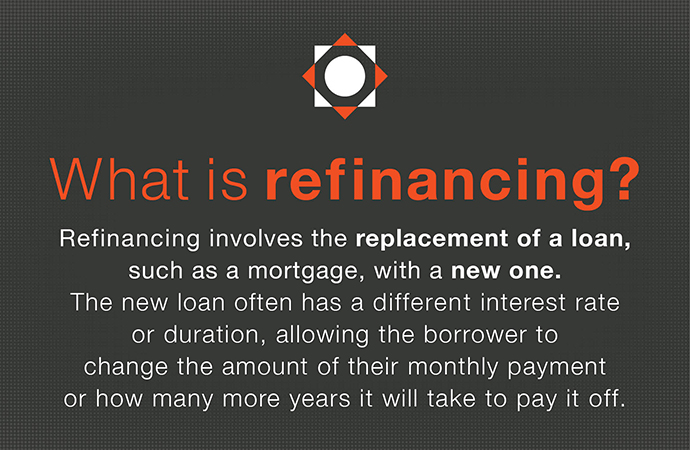Refinancing your home: what you need to know
Thinking about refinancing your home? Home buyers choose to refinance for several reasons, including to reduce their monthly mortgage payment or to pay off their mortgage faster. It’s critical to both understand the motivations for refinancing and how to best navigate the process.
Here’s what you need to know.

What is refinancing?
Refinancing involves the replacement of a loan, such as a mortgage, with a new one. The new loan often has a different interest rate or duration, allowing the borrower to change the amount of their monthly payment or how many more years it will take to pay it off. Borrowers must qualify for the refinance loan, just like they had to for the original loan.
Reasons for refinancing
Is your monthly mortgage payment too high for you to keep up with? Refinancing can allow you to get a new loan with a lower monthly payment. It’s worth noting that by lowering the monthly payment, it will take you longer to pay off the loan, and therefore in the long run you will pay more interest. If your budget is tight right now, this might be a logical tradeoff.
Do you want to swap your 30-year mortgage for a 15-year plan? If you’re able to pay a higher monthly payment on your loan, this refinancing option might make sense for you. This will allow you to pay off your mortgage at a faster rate than initially planned. By paying more in the short-term, it will likely lead to saving on interest in the long-term.
Are you looking to change the type of loan? You might consider switching from an adjustable-rate mortgage (or ARM) to a fixed rate mortgage. An adjustable-rate mortgage might have made sense at the time you took on your mortgage, but if the market has changed unexpectedly, you may prefer to switch to a fixed-rate mortgage that will give you a stable, predictable interest rate on your loan going forward. If you already have a fixed-rate mortgage, switching to an adjustable rate could be a good option for you if you expect the market to be favorable in the coming years.
Once you’ve decided to refinance, what’s next?
Understanding your goals and deciding if refinancing is in your best interest is the first step. Once you’ve made that decision, now what? Running the numbers to get a better idea of your financial situation is recommended.
You should also be aware of closing costs (or fees) associated with the refinancing process. Understand this cost will help you find the break-even point of your refinanced mortgage, which is how long it will take for any monthly savings to cover the closing costs of refinancing.



